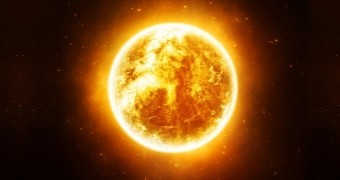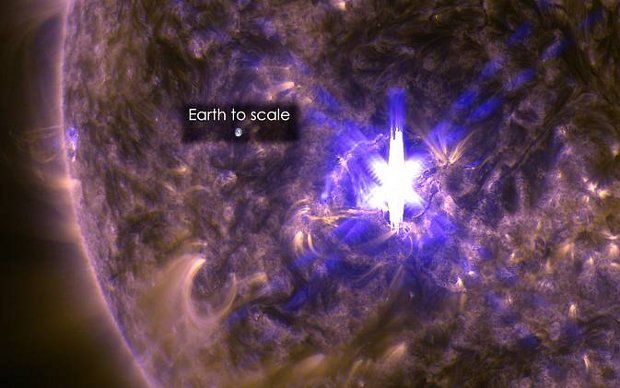Just hours ago, the first monster X-class solar flare of the year was documented on the surface of the Sun by scientists with NASA's Solar Dynamics Observatory.
The solar storm, shown in the video and in the space image available below, occurred yesterday, March 11. Astronomers say that it peaked at 12:22 p.m. EDT.
How the solar flare played out
NASA researchers say that the storm occurred in a region on the surface of the Sun known as AR12297. This particular region has produced several other solar flares over the past few days, all of which were recorded by NASA's Solar Dynamics Observatory.
However, neither of these was as powerful as the one documented this past Wednesday. They were all medium-strength flares and, although impressive to look at, not exactly headlines material.
As mentioned, the sun storm documented just hours ago was an X-class solar flare. This means that it was among the absolute strongest storms our Sun can produce. Besides, it was the first such intense flare of the year.
“This flare is classified as an X2.2-class flare. X-class denotes the most intense flares, while the number provides more information about its strength,” NASA astronomers explain. For instance, an X2 is twice as intense as an X1, while an X3 is three times as intense.
There are a total of three categories of solar flares: C, M and X. C-class flares are the weakest and M-class ones are of medium-strength. X-class flares are at least 10 times more powerful than the ones in the C category.
So, what's the deal with solar flares?
Solar flares are essentially insanely powerful bursts of radiation happening on the surface of the Sun. Such events are often accompanied by eruptions of superheated plasma breaking away from the Sun at an mind-boggling speed.
The radiation produced by solar flares cannot make it all the way to the surface of our planet and harm us. It can, however, disturb GPS and communications signals traveling in the upper layers of Earth's atmosphere.
In fact, it is understood that the solar flare that happened yesterday caused a blackout in high-frequency radio communications over fairly wide areas. The blackout lasted for about an hour.
Provided that this latest monster sun storm was accompanied by an eruption of hot plasma, we might also experience some trouble with satellite navigation and even our power grids in the days to come.
This is because, whereas the radiation released during such events takes just a few minutes to reach Earth, plasma clouds need a few days to complete the same journey.

 14 DAY TRIAL //
14 DAY TRIAL // 


